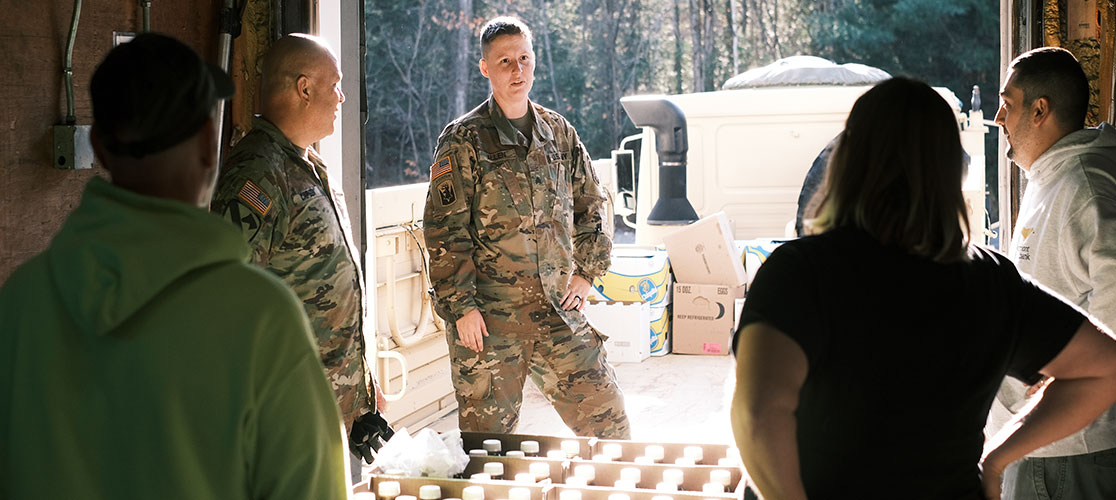
VT Food Security Roadmap: Objective G4
G4: Create a food security emergency response system in Vermont
G4: Create a food security emergency response system in Vermont

Two recent, very different emergencies—the COVID-19 pandemic and the 2023 floods—highlighted that existing Emergency Operations plans, though robust, need updating to meet today’s food security challenges.
Vermont has the opportunity to design an excellent food security emergency response system using recent lessons learned, which will lend a high level of detail to the strategies here. Systems and structures need to be in place and ready to be activated either in specific locations or statewide. These will only function effectively with State support, funding, and coordination. Mutual aid and the Vermont culture of neighborly assistance are important but can be hampered by the presence or absence of volunteers, financial support for emergency needs, personal relationships, and bias. In order for both government and mutual aid to be effective, Vermont 211 must be fully funded and operational (see G2). Each town needs to identify a lead person(s) who agrees to be contacted when needed, knows how to activate the local systems, and plugs into the statewide support network. Ensuring systems and structures are in place before the next emergency will mean more needs are met in that emergency. When needs are met consistently rather than intermittently or haphazardly, it reduces stigma.
Keep in Mind
Collecting data during both emergency and non-emergency times needs to be part of the 211 system. Limited capacities in some Vermont towns will require creative solutions, including possible multi-town collaboration.
Strategies marked with a ![]() are high-priority
are high-priority
Formally establish the existing Mass Feeding Group as a component in the State Emergency Management Plan (SEMP). Revise the existing SEMP to include food and nutrition and expand the Mass Care section related to food and nutrition, including a plan to activate the Mass Feeding Group and designating it to receive relevant 211 data.
Design and implement a statewide food security emergency response system in which each town participates. Integrate the system into State emergency operations plans, with the proposed Office of Food & Nutrition Security providing oversight. Revise the Vermont Emergency Management Local Emergency Management Plan (LEMP) templates to include planning for food security emergency response.
Allocate sufficient funds to a food security emergency response Reserve Fund, to be made immediately accessible during an emergency. Establish standing contracts with statewide nonprofit organizations able and willing to activate appropriate emergency food response programs. Identify, in advance, the authority and funding source for quickly purchasing and distributing appropriate types of food and water during an emergency.
Carefully integrate town response systems into the State Emergency Management Plan and include such considerations as: requiring towns to participate in the food security emergency planning and response system; providing standard systems and checklists for towns and compensation for lead town officials; and creating redundancy with personnel, records, and other preparations.
Include a Food Security Emergency Management track in the annual Vermont Emergency Preparedness Conference to help town and State personnel learn about best practices, connect within their regions, and practice for actual emergencies. Include emergency food security response in tabletop exercises.
“COVID-19 was so long, it really broke down the barrier between emergency feeding and social safety net we have all the time.”
“[What people] did in the pandemic is putting their stuff to the side and working together, saw some opportunities for state and local providers to work collaboratively. We need some structure that makes all of us pull together.”